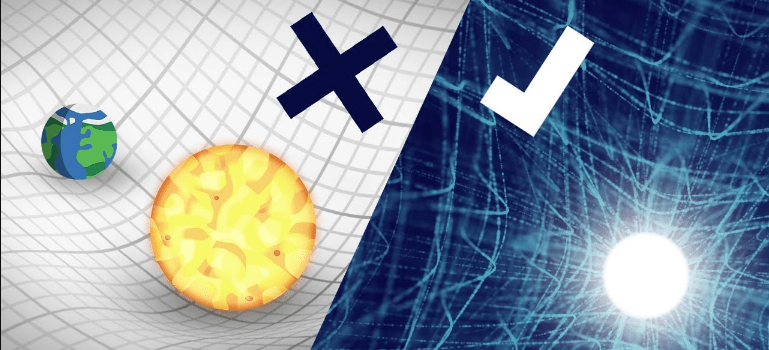A new way to visualize General Relativity
What is General relativity ?
General relativity, also known as the general theory of relativity, is the geometric theory of gravitation published by Albert Einstein in 1915 and is the current description of gravitation in modern physics. General relativity generalizes special relativity and refines Newton’s law of universal gravitation, providing a unified description of gravity as a geometric property of space and time or four-dimensional spacetime. In particular, the curvature of spacetime is directly related to the energy and momentum of whatever matter and radiation are present. The relation is specified by the energy and momentum of whatever matter, a system of partial differential equations.
Some predictions of general relativity differ significantly from those of classical physics, especially concerning the passage of time, the geometry of space, the motion of bodies in free fall, and the propagation of light. Examples of such differences include gravitational time dilation, gravitational lensing, the gravitational redshift of light, the gravitational time delay and singularities/black holes. The predictions of general relativity in relation to classical physics have been confirmed in all observations and experiments to date. Although general relativity is not the only relativistic theory of gravity, it is the simplest theory that is consistent with experimental data. Unanswered questions remain, the most fundamental being how general relativity can be reconciled with the laws of quantum physics to produce a complete and self-consistent theory of quantum gravity; and how gravity can be unified with the three non-gravitational forces—strong, weak, and electromagnetic forces.
Einstein’s theory has important astrophysical implications. For example, it implies the existence of black holes—regions of space in which space and time are distorted in such a way that nothing, not even light, can escape—as an end-state for massive stars. There is ample evidence that the intense radiation emitted by certain kinds of astronomical objects is due to black holes. For example, microquasars and active galactic nuclei result from the presence of stellar black holes and supermassive black holes, respectively. The bending of light by gravity can lead to the phenomenon of gravitational lensing, in which multiple images of the same distant astronomical object are visible in the sky. General relativity also predicts the existence of gravitational waves, which have since been observed directly by the physics collaboration LIGO. In addition, general relativity is the basis of current cosmological models of a consistently expanding universe.
Widely acknowledged as a theory of extraordinary beauty, general relativity has often been described as the most beautiful of all existing physical theories.
How to faithfully represent general relativity ? Is the image of the rubber sheet accurate ? What is the curvature of time ? All these answers in 11 minutes !
Do not forget to share your opinion with us to provide you with the best posts !




0 Comments